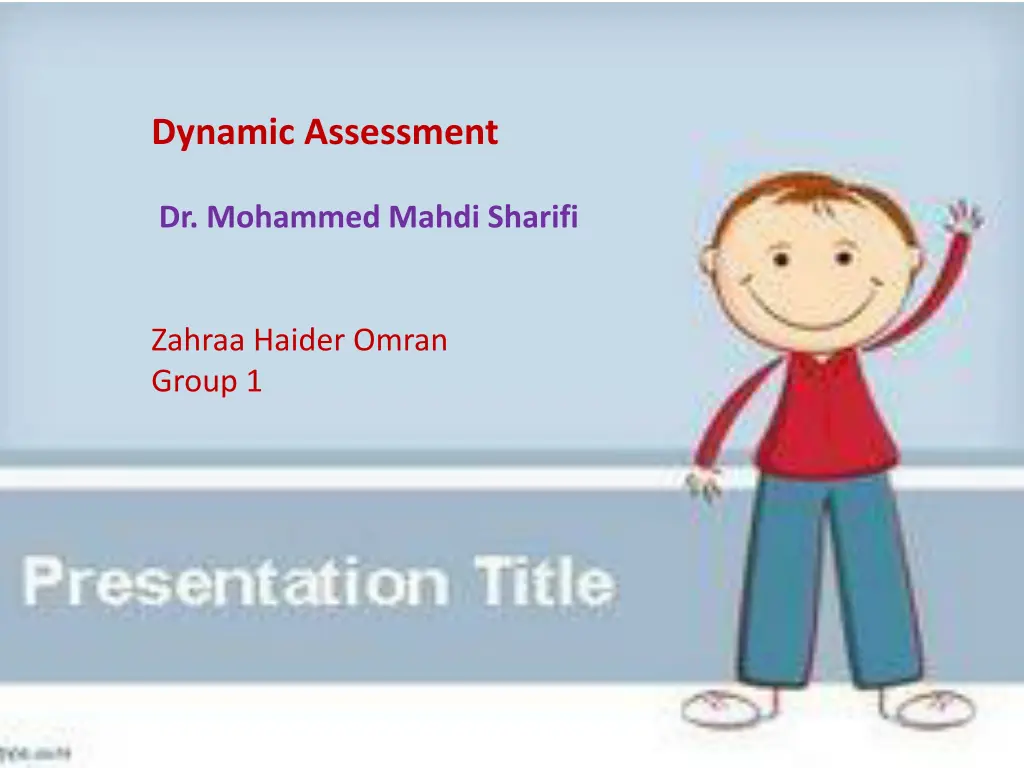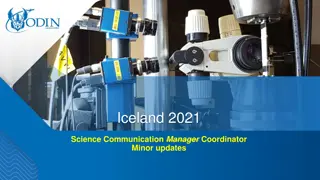
Understanding Dynamic Assessment in Language Learning
Explore the concept of Dynamic Assessment (DA) as an alternative to traditional assessment methods in evaluating students' learning potential. Discover how DA focuses on interaction and the learning process to identify and enhance students' skills in language development.
Download Presentation

Please find below an Image/Link to download the presentation.
The content on the website is provided AS IS for your information and personal use only. It may not be sold, licensed, or shared on other websites without obtaining consent from the author. If you encounter any issues during the download, it is possible that the publisher has removed the file from their server.
You are allowed to download the files provided on this website for personal or commercial use, subject to the condition that they are used lawfully. All files are the property of their respective owners.
The content on the website is provided AS IS for your information and personal use only. It may not be sold, licensed, or shared on other websites without obtaining consent from the author.
E N D
Presentation Transcript
Dynamic Assessment Dr. Mohammed Mahdi Sharifi Zahraa Haider Omran Group 1
Dynamic assessment (DA) is a method of conducting a language assessment which seeks to identify the skills that an individual child possesses as well as their learning potential. The dynamic assessment procedure emphasizes the learning process and accounts for the amount and nature of examiner investment.
Assessing children from culturally and linguistically diverse backgrounds can be a complex task. One alternative to standardized testing methods is dynamic assessment.
The following chart compares features between static and dynamic Static Dynamic Passive participants Examiner observes Identify deficits Standardized Active participants Examiner participates Describe modifiability Fluid, responsive
Several forms of assessment have been implemented in order to satisfy the need of evaluating students' development in the teaching and learning process; the most commonly used is Static Assessment (SA), better known as traditional assessment. However, there is an alternative form to assess students' learning, called Dynamic Assessment (DA), which is based on Vygotsky's sociocultural theory.
DA is a new concept in the field of language learning, it emerges as a way to change the traditional assessment with the idea that assessment and teaching are inseparable entities. Nazary (2012) states that "assessment and instruction are firmly integrated as part of a single activity as can be seen in DA" (p. 57). SA indicates what students have already learned, in contrast DA helps to identify students' performance based on what they are learning or they can learn through interaction.
It was about the late nineteenth century that assessment appeared as a domain of interest for researchers and educators, and standardized assessment was first implemented in the twentieth century" (as cited in Nazari, 2012, p.4). Therefore, during the 1900's standardized assessment was widespread in the United States, and tests of general intelligence to evaluate immigrants and army new members were used. Later on, these tests were also used in education.
"Static assessment (SA) can only measure the learner's actual level of performance (what they can perform independently) but cannot assess their potential level of performance (what they can perform with assistance)" (p.1). SA does not care about the particular individuality of students. It focuses on test results without taking into account the development of students' performance, it also separates instruction from assessment..
dynamic assessment "offers a conceptual framework which integrates assessment into instruction and posits that learners' responsiveness to instruction can be seen as a measure of learners' potential..






















